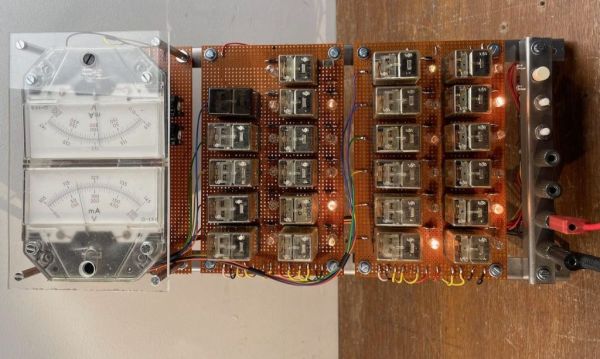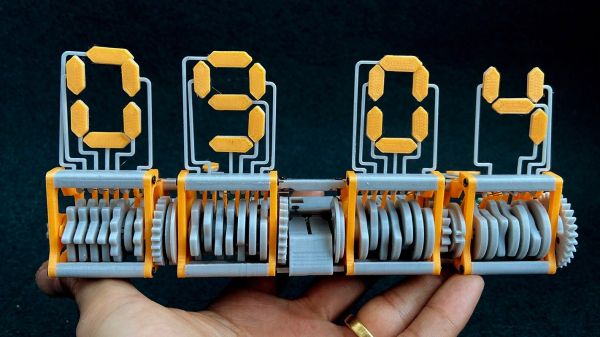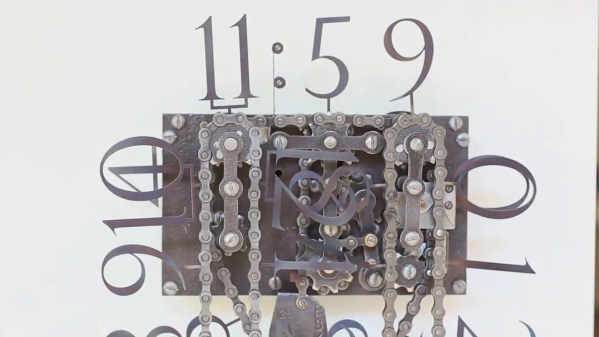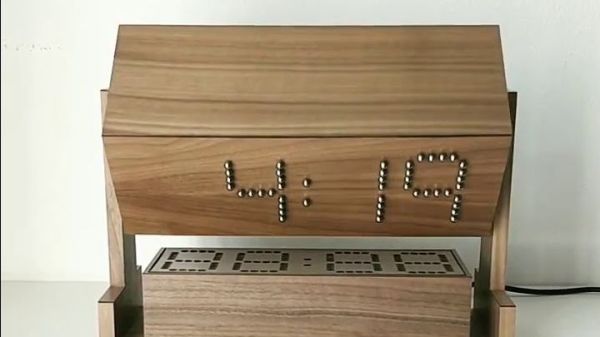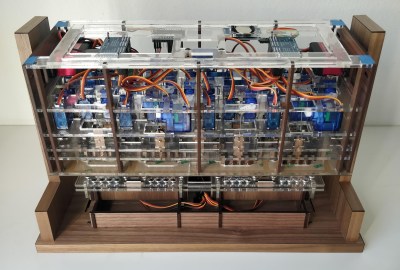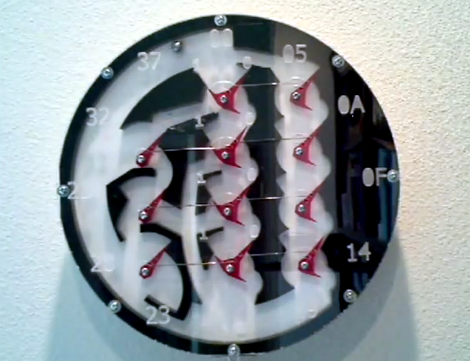Time zones are a complicated but necessary evil. Humans like the numbers on the clock to vaguely match up with what the sun is doing in the sky outside. To that end, different places in the world keep different time. If you want to keep track of them in a very pretty fashion, you might consider building a fancy and beautiful World Clock like [Karikuri] did.
The design is based around a globe motif, mimicking the world itself. Only, on the surface of the globe, there are clock faces instead of individual countries. Each clock runs to its own time, directed by a complicated assemblage of 3D-printed gears. Mechanical drive is sent to the globe from a power base, which itself carries a mechanical seven-segment display. This too can display the time for different regions by using the controls below. It’s also useful for setting the clock to the correct time.
It’s a little difficult to follow the build if you don’t speak Japanese. However, quality subtitles are available in English if you choose to enable them.
We’ve seen [Karikuri’s] work before. We’ve also featured a great many world clocks over the years, including this particularly beautiful example that tracks night and day. Just don’t expect it to keep track of moon time. Video after the break.
Continue reading “Globe-Shaped World Clock Is A 3D-Printed Mechanical Marvel”


